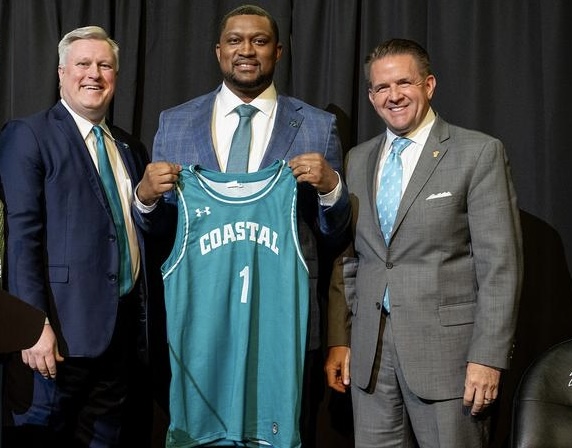NASA scientist visits campus: Casey Cochrane talks water on Europa
Before students departed for fall break, Coastal Carolina University’s department of physics and engineering science invited NASA Jet Propulsion Lab (JPL) scientist Casey Cochrane on Nov. 14 to discuss how magnetometry can help find oceans in our solar system.
Cochrane began his lecture with a quick introduction to his past of how he went from majoring in golf management to completing a Bachelor of Science in electrical engineering at Penn State University. Currently, he works in Pasadena, California as an investigation scientist for the Plasma Instrument for Magnetic Sounding (PIMS) investigation, the calibration lead for the Europa Clipper Magnetometer (ECM) investigation, and the radiation focus group facilitator for the Europa Clipper mission.
Set to launch on Oct. 10, 2024, the Europa Clipper will orbit one of Jupiter’s moons, called “Europa,” in search of water. The ECM will detect the strength and orientation of magnetic fields to hopefully find water beneath Europa’s ice crust.
As the calibration lead, Cochrane is tasked with working around the plasma fields surrounding Europa since they can influence magnetic fields and disrupt the ECM’s data.
To study the surrounding plasma, PIMS will measure the plasma and account for any magnetic distortions it may cause. This will help increase the accuracy of ECM’s data and properly confirm the presence of water on Europa. Cochrane’s lecture ended with a quick Q&A that allowed many students to receive further insight into operations at NASA’s JPL.
The following day, Cochrane returned to present another lecture to Gupta College students. He focused on using quantum sensing technology to measure planetary magnetic fields. As this was a far more private event, students could discuss their own take on the subject with Cochrane and receive clarification on an














